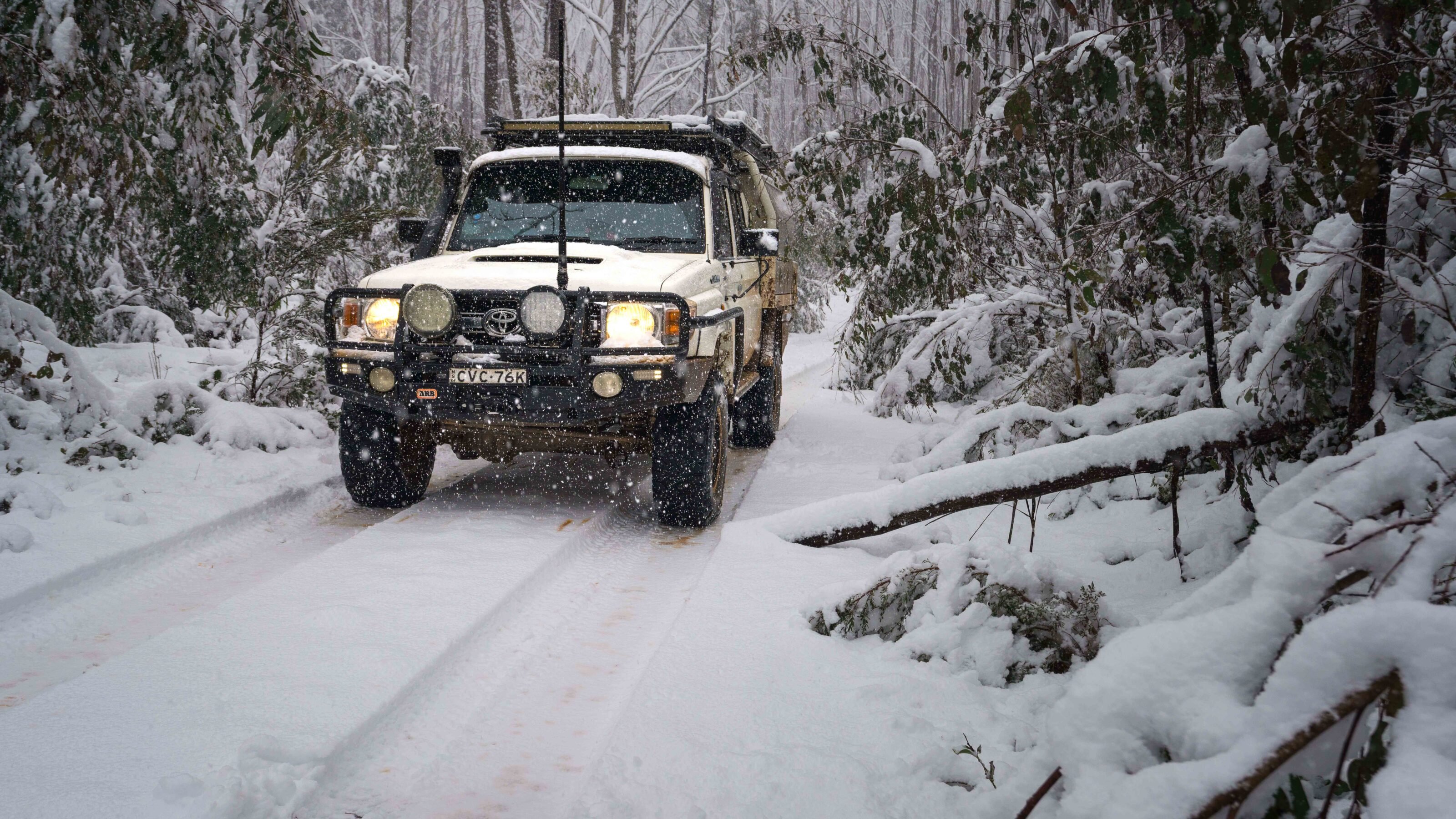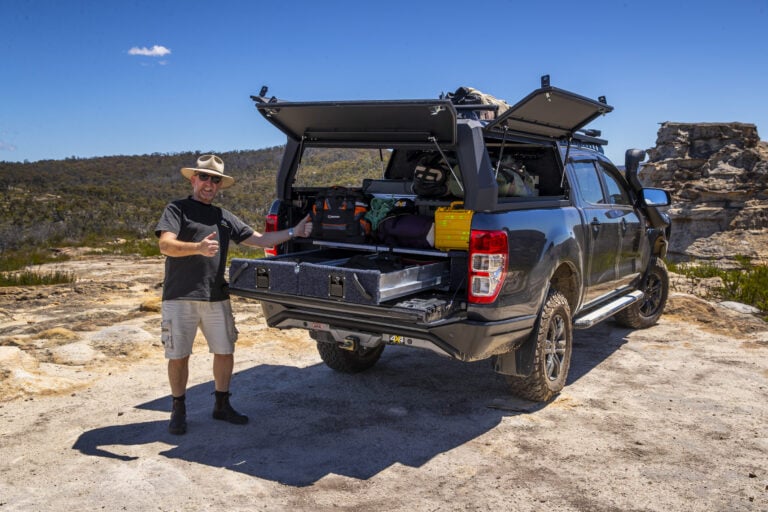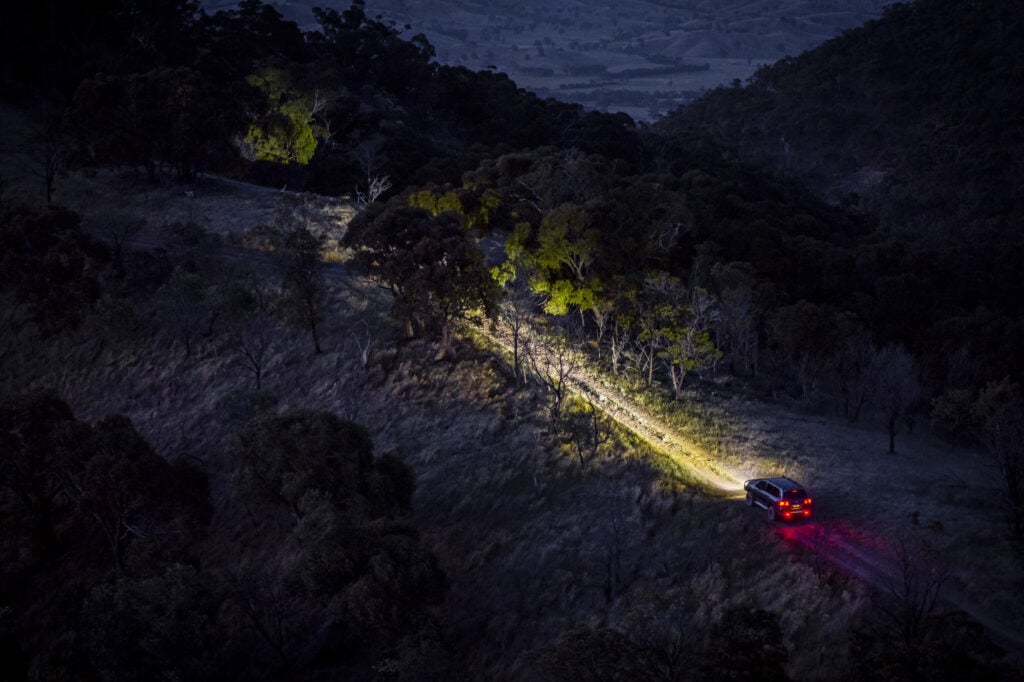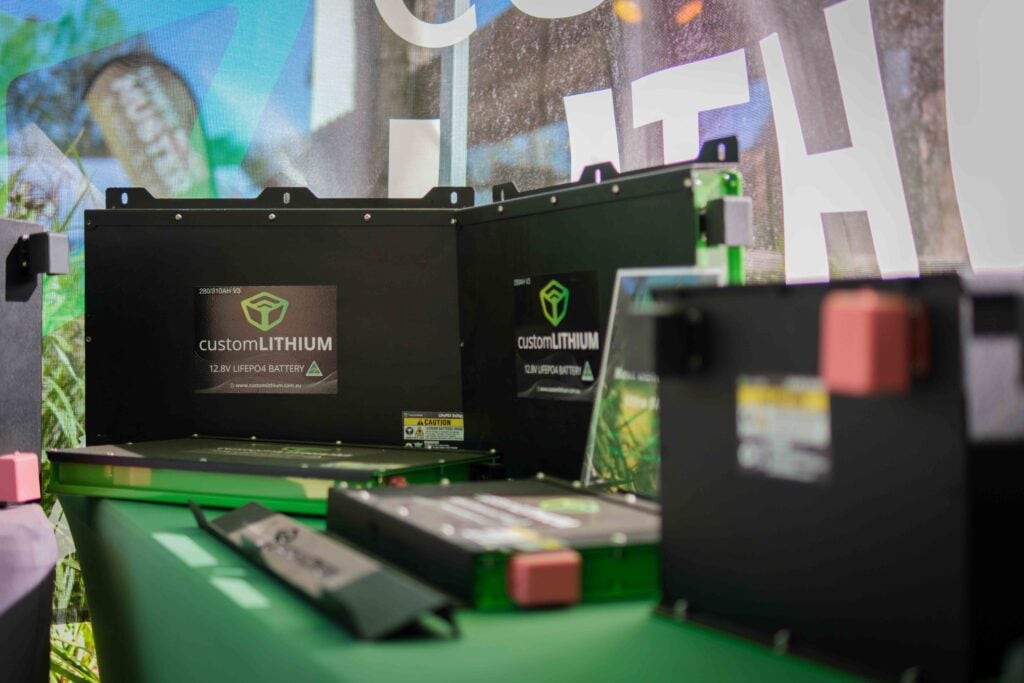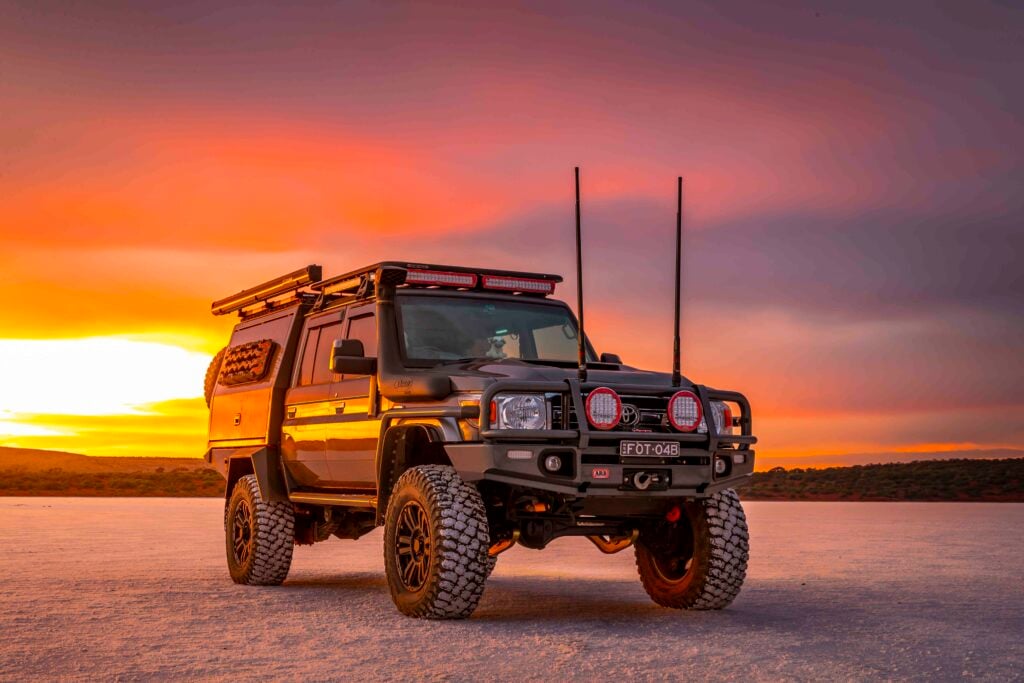If you’re the type who’s got a screw loose and lives for a wild adventure – first of all, hi, and welcome to Lunatics Anonymous. Secondly, you’re probably just the sort of person who’d be tempted to try snow camping.
But before you go chasing sub-zero thrills, it’s worth knowing what you’re getting into. Four-wheel driving and camping in snow isn’t your average weekend away – it’s next-level stuff. And if you get it wrong, it can go bad fast.
So here are eight things you need to know before heading into the white stuff – because fun should never come at the cost of being unprepared.
JUMP AHEAD
- Prep your 4×4 for cold weather
- Traction tips: Snow and ice
- Managing cold and wind chill
- Snow camping hack: Use an umbrella
- Avoid falling trees and branches
- Keep gear dry in wet conditions
- Protect your feet from snow
- Dealing with heavy snow loads
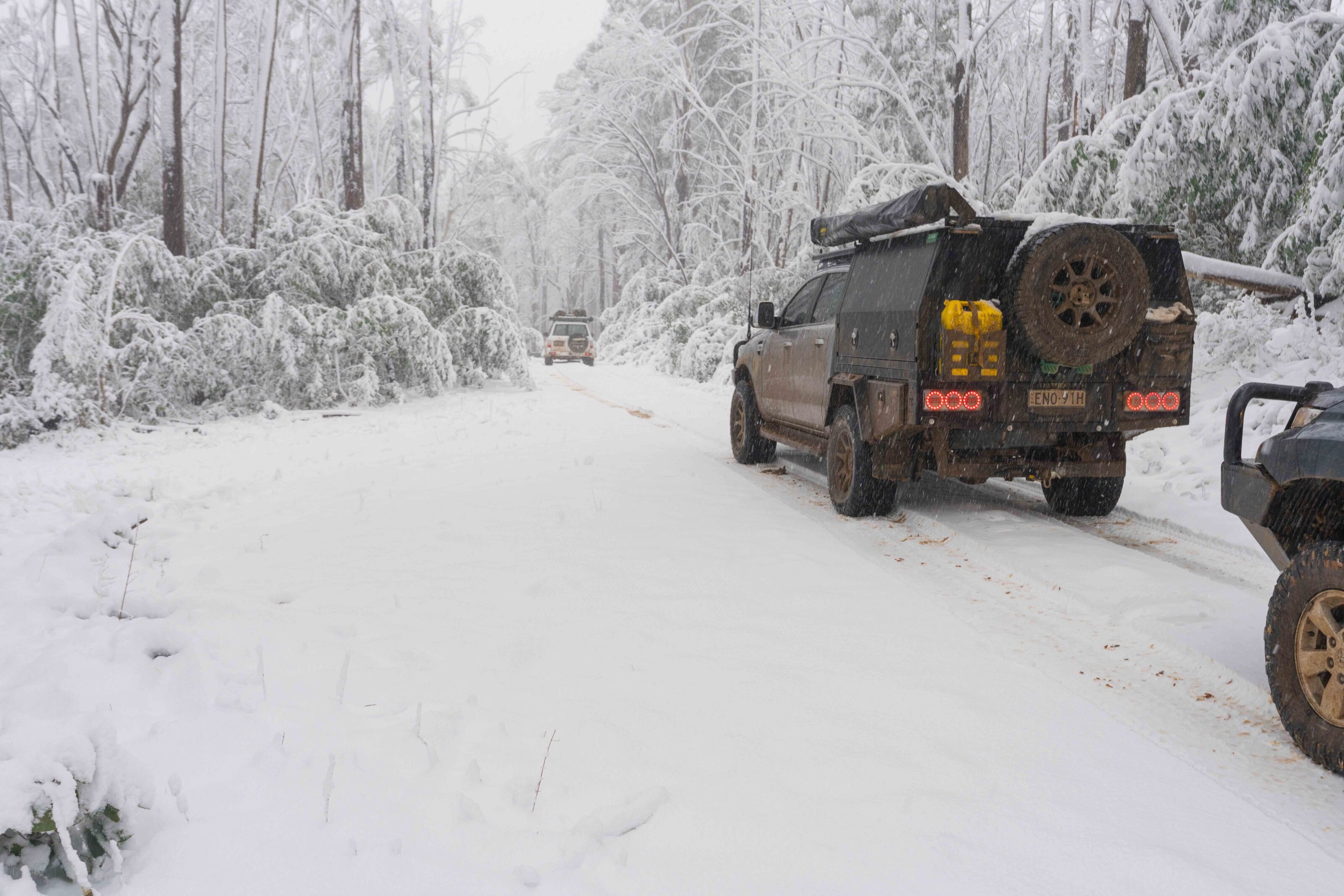
Prep your 4×4 for cold weather
Planning a night out in sub-zero temps? It’s not just you that needs to be ready – your 4×4 needs to be prepped for cold weather, too.
If you’re running a diesel, you’ve probably heard of alpine diesel – it’s treated with anti-gel additives to stop it waxing up in freezing conditions. You won’t find it at your local servo, so fill up in the alpine towns before heading up. Also for diesel owners: check your glow plugs. If they’re already sluggish on cold mornings, they’ll struggle even more when it’s below zero.
For both petrol and diesel rigs, battery health is critical. A tired battery can leave you stranded come morning, and keep in mind that lithium batteries don’t like charging below freezing either.
And don’t forget your cooling system. It sounds odd, but if your coolant mix isn’t right, it could freeze. A faulty thermostat can also stop the engine reaching operating temp – and if that happens, your heater is not going to work. That’s a dealbreaker in snow country.
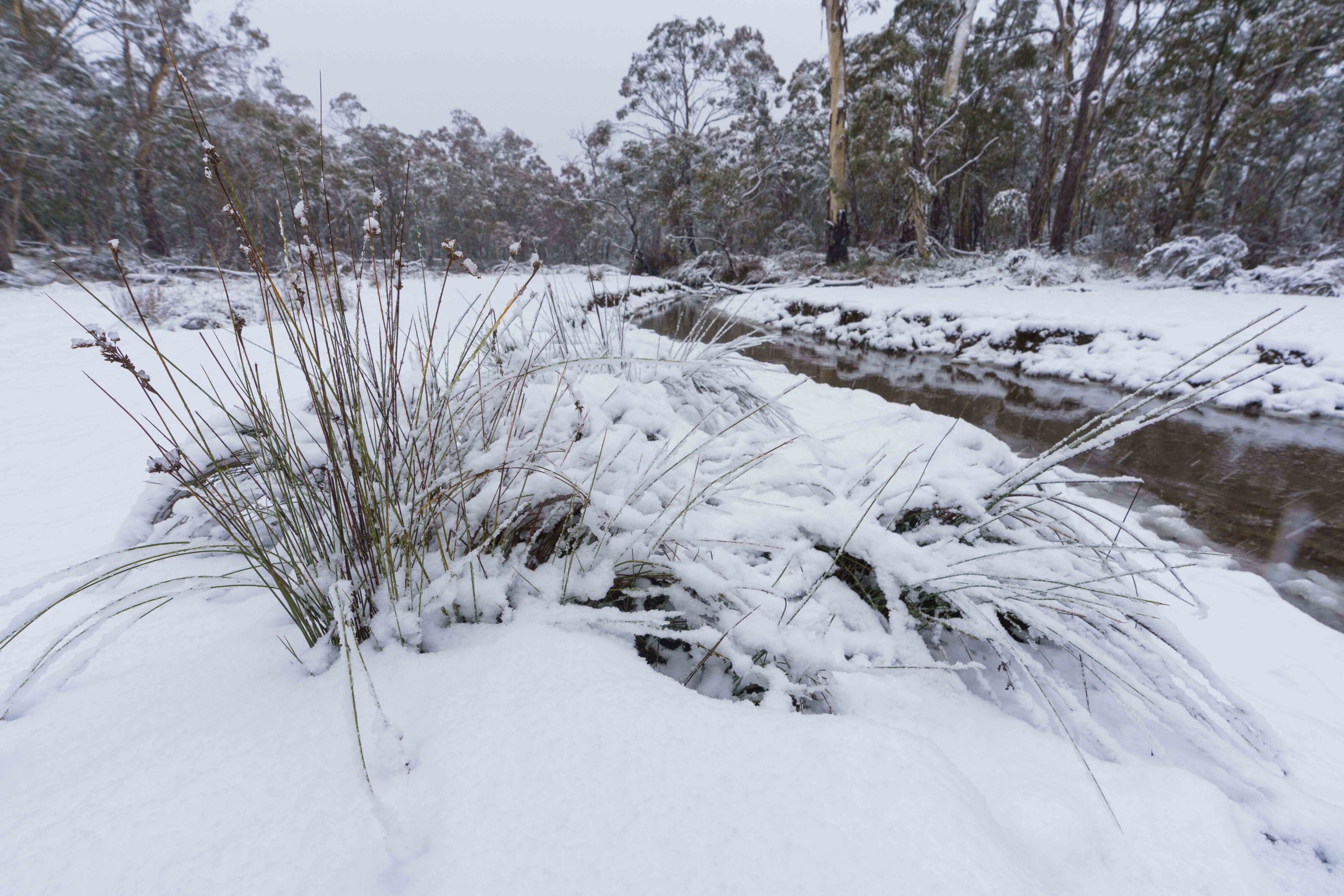
Traction tips: Snow and ice
Yeah, it’s obvious – snow is wet and slippery. But what might catch you out is just how slippery it can get, especially once a few vehicles have been through and compacted the surface. That’s when snow turns to ice – and ice makes clay look grippy.
Even basic tracks can get sketchy, and if the trail drops away on one side, sliding sideways becomes a very real possibility. Air down lower than you normally would for dirt driving – you’ll need every bit of traction you can get. If you’ve got a bit of maniac in you and feel like tackling something steeper, remember: snow doesn’t run off like rain. It sits, seeps and soaks. Tracks that are just a bit slick in the wet can turn into proper winch-fests in snow.
Personally, spending a day buried up to the knees in snow, hanging off a winch rope to drive a track that’s normally easy? Not high on the list – unless it leads to a snow camp with a view. But hey, if your winch is begging for punishment, knock yourself out.
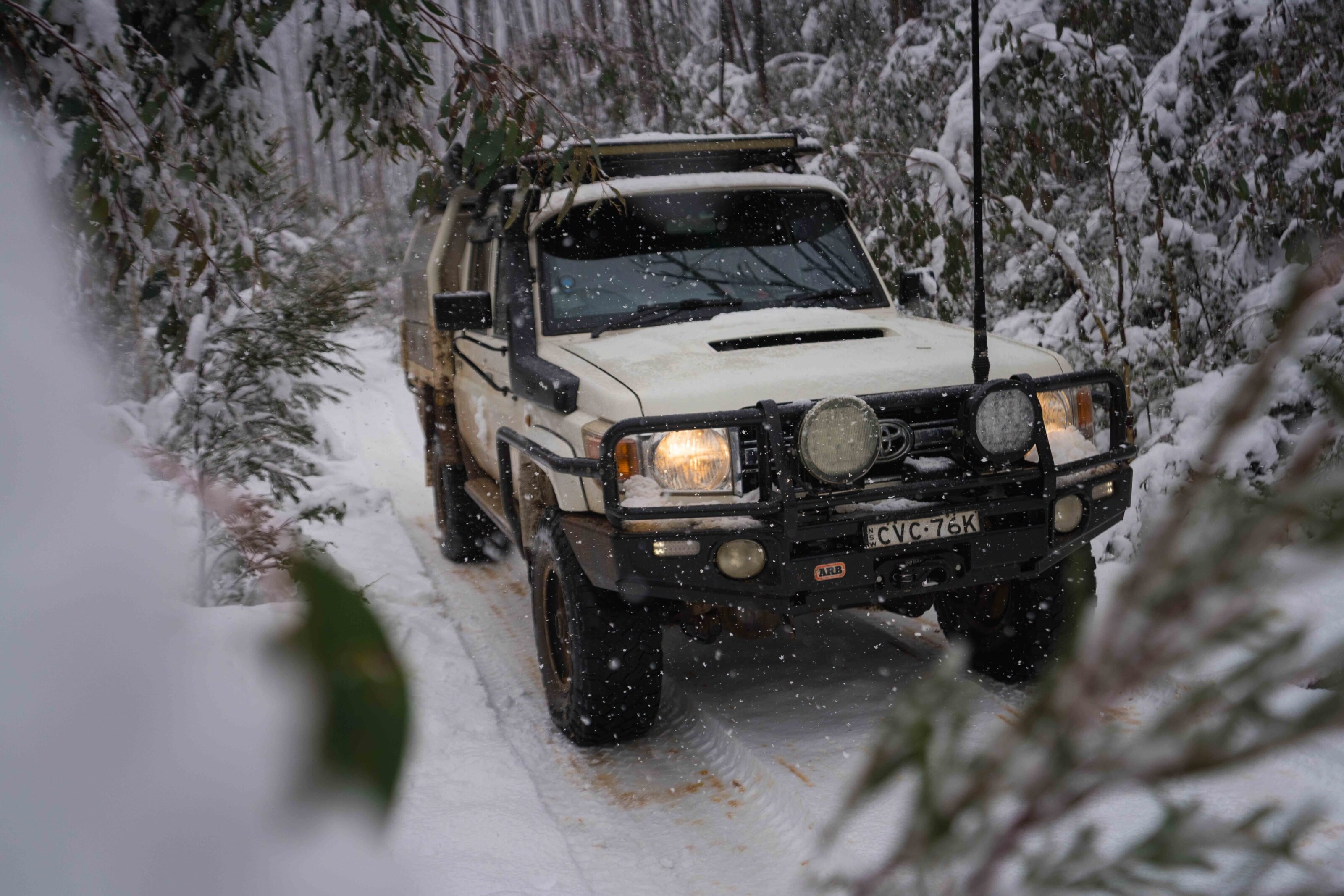
Managing cold and wind chill
Yep, another obvious one – but cold in the snow isn’t just about the temperature reading. If you’re chasing snow, you’re also chasing altitude, and with elevation comes more wind.
In fact, snow camps can sometimes be warmer than clear-sky winter camps at the same time of year, thanks to cloud cover. But – and it’s a big but – wind chill can be brutal. Some nights I’ve had to bail from exposed ridgelines and drop into lower gullies just to get out of the breeze.
When you’re checking the weather, don’t just glance at the min/max. Look at the forecast snow level. If snow is predicted to fall to 1,000m, chances are you’ll get a light dusting at best. But climb another 100–200m and you could be pitching your tent in fresh powder instead of wet mud. Elevation matters.
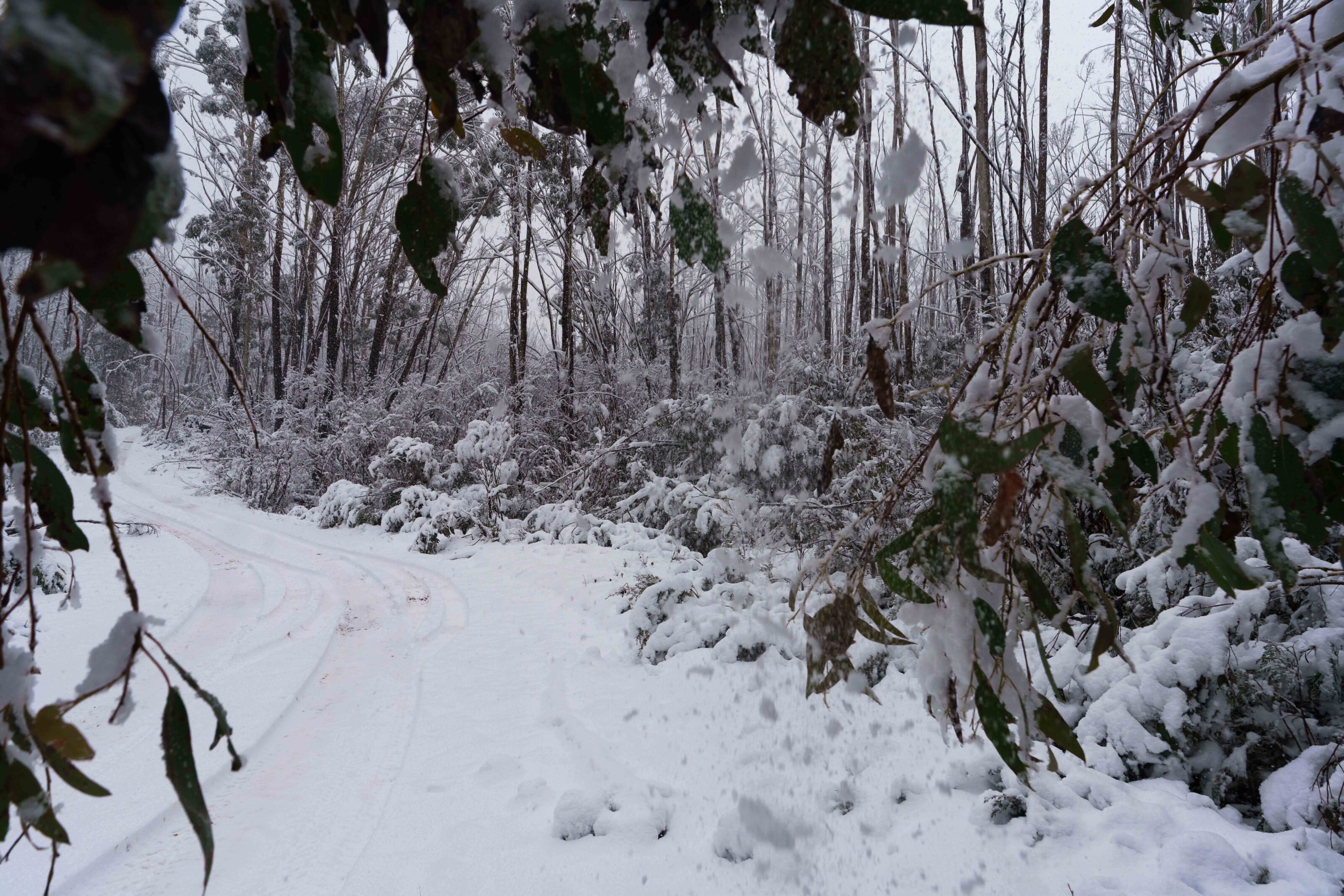
Snow camping hack: Use an umbrella
This one was a happy accident – but it’s now one of our favourite snow camping hacks.
As much as we love snow, sometimes it’s nice to get out of the wet, especially when you’re parked around the big fire you’ll need to stay warm.
A simple umbrella will keep snow off your shoulders and your camp chair, but the real bonus? It traps heat rising from the fire and reflects it back down toward you. It’s like a mini heat dome. Don’t bring your best umbrella, though – wayward sparks will likely leave a few pinholes. Grab a cheapie from your local sausage sandwich hardware store.
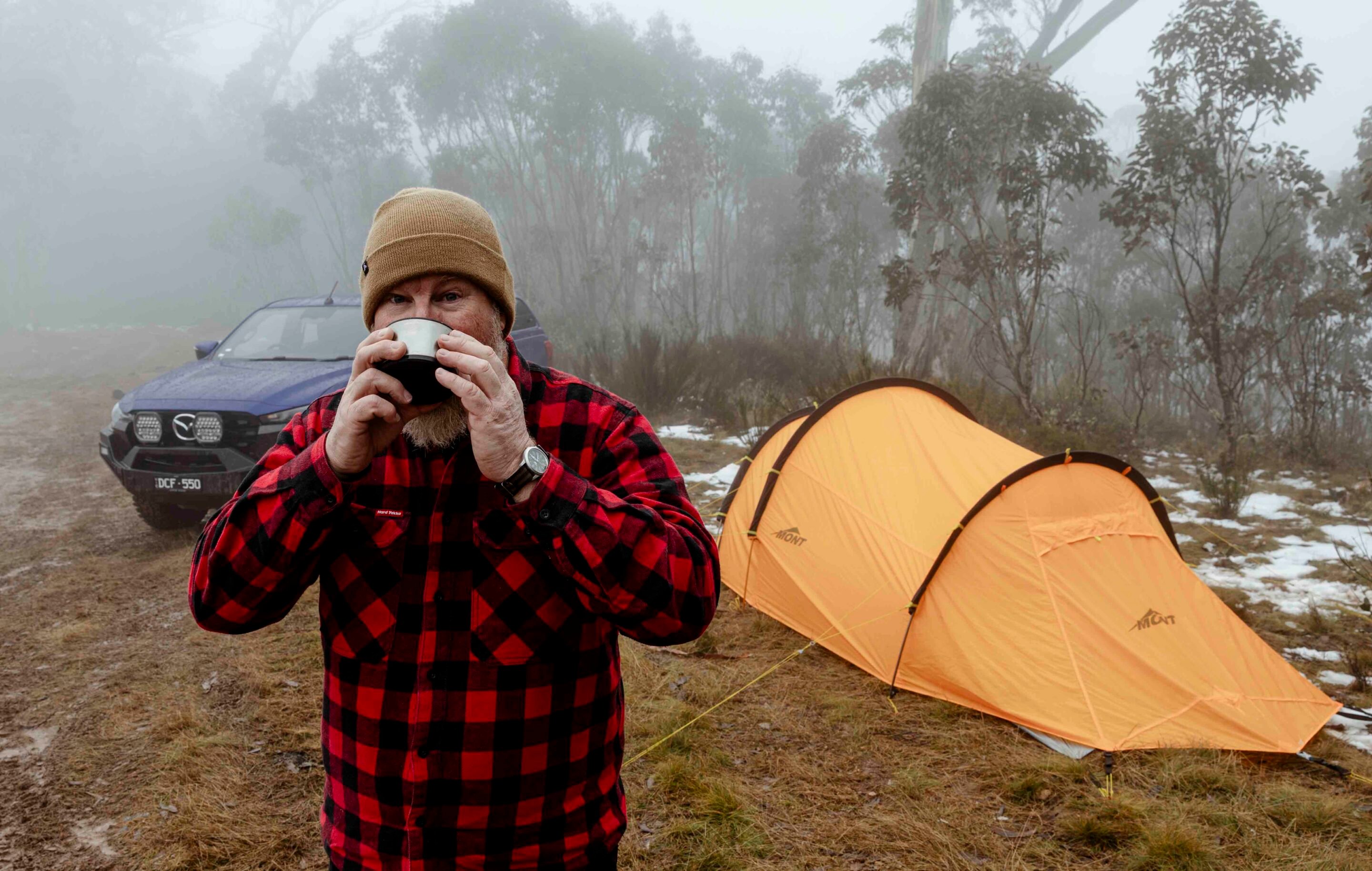
Avoid falling trees and branches
This one gets a bit hairy – especially when you’re zipped into your swag at 2am and hear the crash of a tree giving way.
Gum trees already have a reputation for dropping limbs without warning. Add a heavy snow load and wet ground, and now they’ve got a reason. Expect trees to come down regularly – and randomly – during and after snowfall.
Be smart about where you camp and park. Avoid standing dead timber and overloaded branches. And don’t hit the snow without a chainsaw and spare fuel or batteries (depending on how high-tech you’ve gone). Chances are good you’ll need to clear at least one tree off the track.
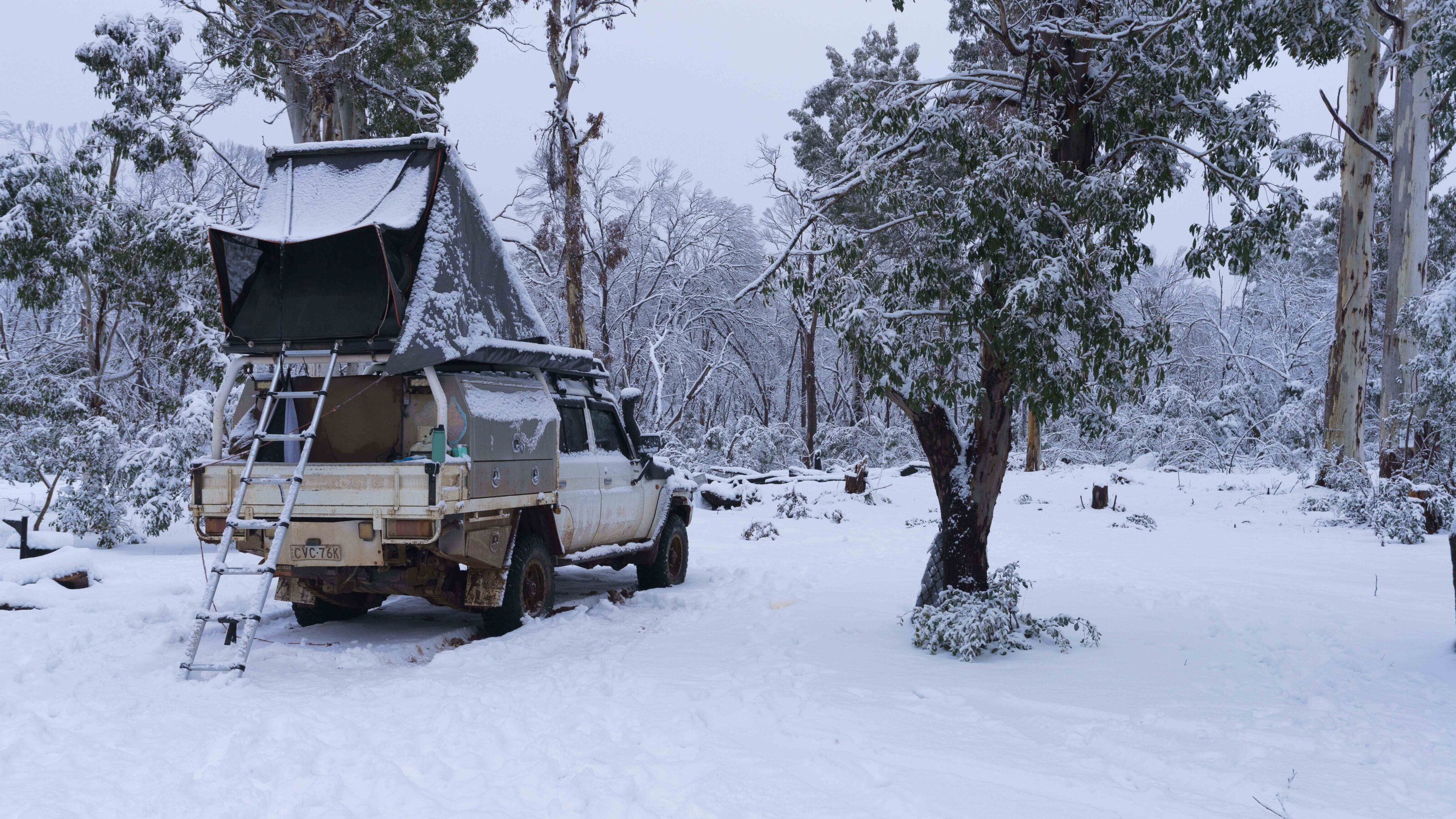
Keep gear dry in wet conditions
Firewood? Wet. The ground? Wet. Your clothes, boots, and swag? Probably wet too.
Collecting firewood in the snow is a pain – most of it is soaked through and nothing dries in sub-zero temps. If you can, bring a stash of dry wood from home. If not, a battery-powered blower is a brilliant tool to coax damp timber into burning.
Unless you’ve got top-end snow gear, your clothes will get damp one way or another, so bring spares. And be prepared to pack up a wet awning, wet swag, and wet tent – because in the high country, nothing dries out during the day. We recommend packing a couple of old towels to wipe gear down, and maybe a tarp or two to wrap up wet kit.
And if you’re happy to ‘cheat’, a 12V electric blanket is worth its weight in gold – because there’s nothing worse than crawling into a soggy swag at the end of a freezing day.

Protect your feet from snow
This deserves its own mention – because once your feet are wet, you’re miserable.
A few inches of snow might not seem like much, but after a full day trudging around camp, your regular work boots will soak through. Even proper snow boots can let water in over the top if the snow’s deep enough. Gumboots? They’ll keep you dry, but they’re not warm.
If you don’t have waterproof snow boots, the best solution is simple: bring extra socks and a spare pair of shoes. After each day, dry your wet gear around the fire and rotate your footwear. It’s not glamorous, but warm, dry feet make snow camping a whole lot more enjoyable.
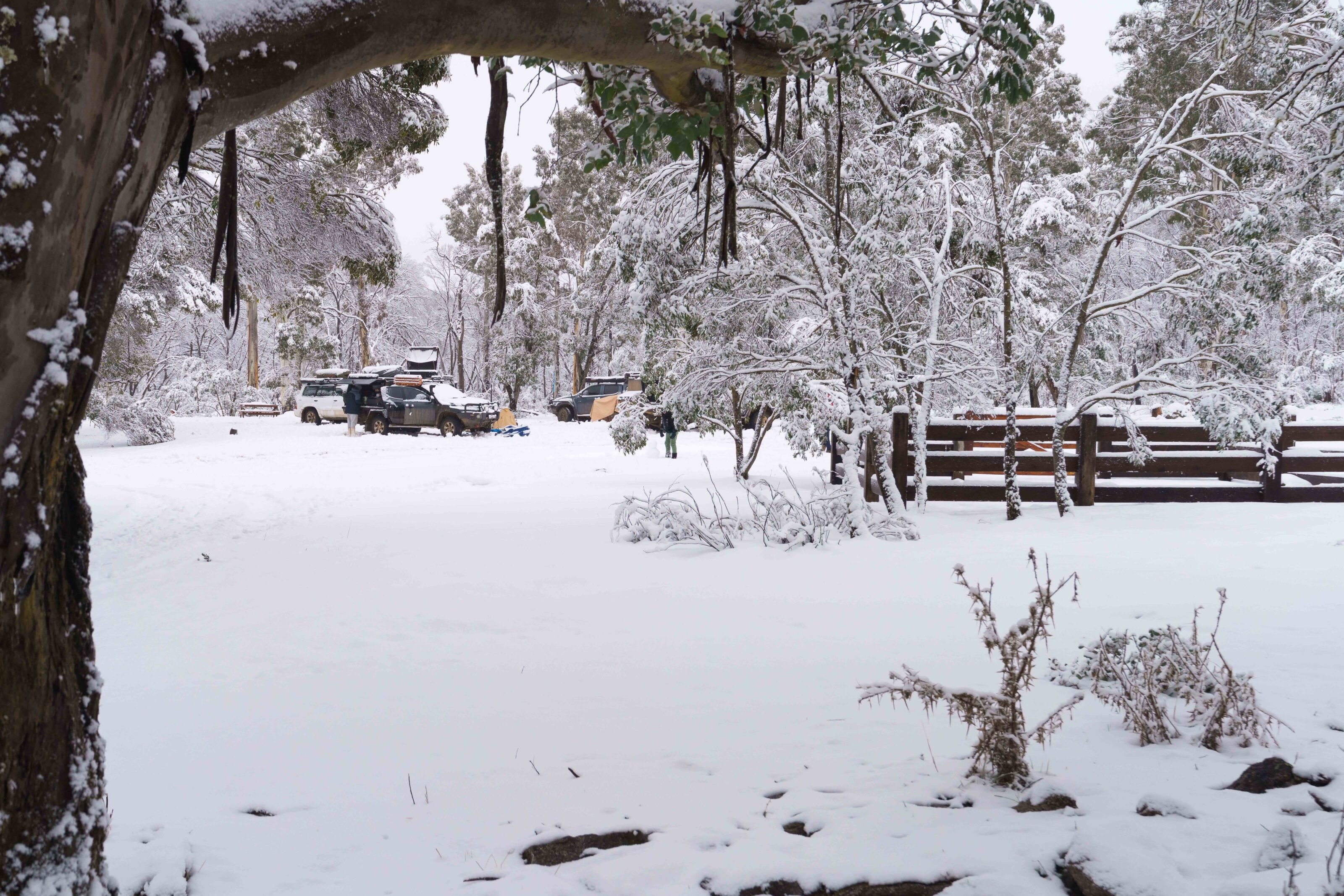
Dealing with heavy snow loads
Unlike rain, snow doesn’t run off shallow angles – it accumulates. Fast. And once it starts piling up on your awning, tent or rooftop setup, the weight adds up quickly.
Poles bend. Canvas stretches. Last camp my hard shell roof top tent started to close on me under the weight of snow. You have a couple of options to get around this here:
- Get up through the night and brush the snow off – a broom works a treat.
- Pitch your awning at a steep angle – we’re talking near vertical here – to stop it collecting. This is not possible with the 270° A-frame awnings that are popular these days.
- Or go the old swag on the ground or on a stretcher out in the open. You can throw a tarp over the top to keep dry but snow will still accumulate, so give it a couple of whacks throughout the night to knock the snow off.
Snow camping isn’t something we get to do often in Australia, but when conditions line up, it’s an unforgettable experience. It’s wet, it’s cold and it’s incredibly rewarding. Driving bush tracks through fresh powder is a rare privilege and with a bit of preparation, something that can be done relatively safely.

